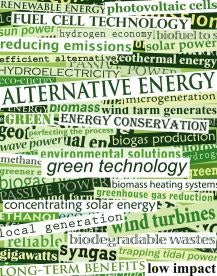On January 9, 2023, the Council on Environmental Quality (“CEQ”) published new interim guidance to assist federal agencies in assessing greenhouse gas (“GHG”) emissions and climate change in their environmental reviews of proposed federal actions under the National Environmental Policy Act (“NEPA”). For years, the analysis of GHG and climate change in NEPA reviews has presented a significant challenge for federal agencies and project proponents, leading to substantial litigation, delays, and increased costs. The new National Environmental Policy Act Guidance on Consideration of Greenhouse Gas Emissions and Climate Change (the “Guidance”) is the latest effort by CEQ to provide greater direction and certainty, to improve the efficiency and consistency of the NEPA review process, and reduce litigation risk.
Updating earlier guidance issued in 2016, the new interim Guidance provides important direction on what CEQ currently views as the appropriate way for federal agencies to apply NEPA principles and best practices to their analyses of climate change impacts, including in the context of renewable energy projects and other infrastructure. This includes recommending that agencies quantify projected GHG emissions or reductions over an action’s expected lifetime. The Guidance does not, however, establish any particular quantity of GHG emissions as “significantly” affecting the quality of the environment or establish a particular quantification methodology for use across agencies. The Guidance also encourages agencies to identify alternatives and mitigation measures to avoid or reduce GHG emissions, as well as to mitigate GHG emissions associated with proposed actions to the greatest extent possible, consistent with national climate change policies.
In addition to evaluating proposed actions’ effects on GHG and climate change, the Guidance calls for a corollary analysis of how climate change and climate change impacts (e.g., increasing sea levels, more severe weather, etc.) may impact proposed actions. The Guidance also calls for consideration of the effects of climate change on environmental justice communities and provides guidance on how to conduct that analysis.
The interim Guidance is effective immediately, but CEQ is accepting public comment through March 10, 2023. After the close of the comment period, CEQ will either revise the Guidance in response to comments or finalize the Guidance. For now, this Guidance applies to NEPA review for all new proposed actions and directs agencies to exercise judgment in deciding whether to apply the Guidance “to the extent practicable” to ongoing NEPA processes.
Background
The new interim Guidance comes in the wake of political whiplash and litigation on the issue of GHG emissions and climate change considerations in NEPA reviews. The Guidance “builds upon and updates” CEQ’s 2016 Final Guidance for Federal Departments and Agencies on Consideration of Greenhouse Gas Emissions and the Effects of Climate Change in National Environmental Policy Act Reviews, issued during the Obama Administration. During the Trump Administration, CEQ withdrew the 2016 Obama-era guidance and in 2019 issued new draft guidance that proposed a narrower approach to consideration of GHG emissions and climate change in NEPA reviews. That draft guidance was never finalized and was formally withdrawn by the Biden Administration in February 2021. Litigation has continued as the guidance on this issue continues to evolve and agencies continue to struggle to determine how to consider GHG emissions associated with agency actions in a manner that will withstand judicial review.
The Guidance
Pursuant to NEPA, federal agencies must consider and disclose the reasonably foreseeable effects of their proposed actions. Courts have concluded that this obligation includes consideration of the extent to which a proposed action and its reasonable alternatives would result in reasonably foreseeable GHG emissions. The Guidance provides that in analyzing a proposed action’s climate change effects under NEPA, agencies should take the following steps:
-
Quantify the reasonably foreseeable GHG emissions (including direct and indirect emissions) of a proposed action, the no action alternative, and any reasonable alternatives;
-
Disclose and provide context for GHG emissions and climate impacts, including, as relevant, monetizing climate damages using the social cost of GHG (“SC-GHG”) and placing emissions in the context of climate action goals and commitments; and
-
Analyze reasonable alternatives, including alternatives that would reduce GHG emissions, and identify available mitigation measures to avoid, minimize, or compensate for climate effects.
The Guidance notes that the scope and depth of this analysis should be proportionate to the proposed action’s impact on GHG emissions and should rely heavily on existing analyses and resources, including resources available on CEQ’s GHG Accounting Tools website.
Quantification
The Guidance recommends that agencies should quantify the reasonably foreseeable direct and indirect gross GHG emissions increases and reductions for the proposed action, no action alternative, and any reasonable alternatives over the action’s projected lifetime, using reasonably available information and data. These gross emissions should be calculated individually by GHG as well as aggregated in terms of total CO2 equivalence by factoring each pollutant’s global warming potential (“GWP”). Further, these calculations should include a quantification of the proposed action’s and alternatives’ total net GHG emissions or reductions relative to baseline conditions (defined as the “current and projected future state of the affected environment without the proposed action”).
The Guidance provides that, where feasible, agencies should present annual GHG emission increases or reductions—particularly where a proposed action presents both reasonably foreseeable GHG emission increases and reductions, such as a project that may involve construction-related emissions in its early years before achieving later emissions reductions.
The Guidance makes clear that this quantitative analysis is to be guided by the “rule of reason,” the longstanding legal standard established in the case law for evaluating the adequacy of environmental documents under NEPA, and the concept of proportionality. For renewable energy projects or other infrastructure that may involve net GHG reductions or no net GHG increase, the Guidance advises agencies to generally quantify projected GHG emission reductions, but to apply the rule of reason when determining the appropriate depth of analysis to ensure that precision regarding emission reduction benefits does not come at the expense of efficient and accessible analysis. According to the Guidance, “[a]bsent exceptional circumstances, the relative minor and short-term GHG emissions associated with construction of certain renewable energy projects, such as utility-scale solar and offshore wind, should not warrant a detailed analysis of lifetime GHG emissions” and actions with only small GHG emissions may be able to rely on less detailed emissions estimates.
The Guidance provides that the temporal bounds of the GHG analysis are determined by the expected life of the proposed action and its effects but notes that the “impacts of GHGs can be very long-lasting.” Notably, the Guidance does not specify the timeframe by which agencies should consider GWP, which is sometimes calculated on a 20-year timeframe and sometimes based on a 100-year timeframe (GWP 20 or GWP 100).
The Guidance also addresses how GHG emissions should be analyzed as direct or indirect effects. NEPA requires agencies to consider reasonably foreseeable direct and indirect effects of the proposed action and its reasonable alternatives. Direct effects refer to effects that are caused by the action and occur at the same time and place. Indirect effects generally include emissions related to the proposed action that are upstream or downstream of the activity resulting from the proposed action. The Guidance provides examples of direct and indirect effects for fossil fuel extraction where direct emissions typically include GHGs emitted during the process of exploring for and extracting the fossil fuel, and indirect effects include effects associated with the processing, refining, transporting, and end-use of the fossil fuel being extracted (including combustion of the resource to produce energy).
Where information needed to quantify direct or indirect emissions is not available despite an agency’s efforts to obtain the information (including from project proponents), the Guidance instructs agencies to use their best efforts to develop a range of potential emissions. The Guidance further suggests that in doing so, agencies can provide an upper bound for the effects analysis by treating the resource provided or enabled by the action as new or additional (in the example of fossil fuel extraction or transportation this is sometimes referred to as a “full burn” assumption by assuming that all of the available resources will be produced and combusted to create energy). If an agency determines that it cannot provide even a reasonable range of potential GHG emissions, consistent with the 2016 guidance, the Guidance provides that the agency should provide a qualitative analysis and its rationale for determining that a quantitative analysis is not possible.
Notably, the Guidance explicitly does not establish a particular quantity of GHG emissions as “significantly” affecting the quality of the human environment. By not establishing a threshold, the Guidance leaves it to each agency to determine on a case-by-case basis whether GHG emissions may justify preparation of an environmental impact statement rather than an environmental assessment.
Context and Monetization
After GHG emissions have been estimated, the Guidance indicates that agencies should also provide context for the GHG emissions and climate effects to help decision makers and the public better understand the impacts of the proposed action. The Guidance provides that, in most circumstances, once agencies have quantified GHG emissions, they should apply best available estimates of the SC-GHG to the incremental metric tons of each individual type of GHG emissions expected from the proposed action and its alternatives. The SC-GHG allows for monetization of the climate change effects—such as temperature increase, sea-level rise, infrastructure damage, and health effects—from carbon dioxide, methane, and nitrous oxide emissions. The SC-GHG translates metric tons of emissions into dollars, which allows for comparisons to other monetized values when appropriate.
To provide further context, the Guidance suggests that the analysis explain how the proposed action would help meet or detract from achieving relevant climate action goals and commitments, such as the Paris Agreement and national and local goals and commitments.
Consideration of Reasonable Alternatives
Consistent with the principle that NEPA requires the consideration and disclosure of environmental impacts of a proposed action, but not the selection of a least environmentally impactful alternative, the Guidance does not require an agency to select the alternative with the lowest net GHG emissions or climate costs or the greatest net climate benefits. Rather, agencies should use this information to help identify potential alternatives and inform decisions that align with climate change commitments and goals. Notably, however, for proposed actions that will generate substantial GHG emissions, the Guidance still provides that agencies should identify the alternative with the lowest net GHG emissions or the greatest net climate benefits amongst the alternatives evaluated.
Mitigation
The Guidance provides that agencies should consider mitigation measures that will avoid or reduce GHG emissions. Given the urgency of the climate crisis, CEQ encourages agencies to mitigate GHG emissions to the “greatest extent possible.”
Environmental Justice
The Guidance provides that when assessing environmental justice considerations in NEPA analyses, agencies should use the scoping process to identify potentially affected communities and provide early notice of opportunities for public engagement. CEQ also recommends that agencies regularly engage environmental justice experts and leverage the expertise of the White House Environmental Justice Interagency Council to identify approaches to avoid or minimize adverse effects on communities of color and low-income communities.
Implications
Although courts will view this Guidance as advisory and non-binding in future litigation, it nevertheless provides important direction to agencies on a technically complicated and politically-charged issue. The Guidance’s recommendations on preparation of quantified GHG emissions analysis—on both a lifetime and an annual basis—provide further clarification but also could impose potentially significant burdens on both federal agencies and project proponents. The Guidance’s embrace of the “rule of reason” and concept of proportionality, however, could be helpful in the context of certain renewable energy, carbon capture utilization and sequestration (“CCUS”), and other infrastructure projects with low, no, or negative net GHG emissions. The Guidance’s recommendation that agencies monetize GHG emissions impacts through application of SC-GHG estimates, despite its acknowledgment that NEPA “does not require a cost-benefit analysis in which all monetized benefits and costs are directly compared,” is significant and goes beyond CEQ’s earlier 2016 guidance.
Even with this added direction, however, significant uncertainty remains. For example, the Guidance is unlikely to create consistency across agencies in terms of which models or assumptions to use in calculating GHG emissions. Additionally, the Guidance fails to provide clear end points in calculating lifecycle GHG emissions or definitive direction on which projects outside of the fossil fuel context require lifecycle GHG emissions calculations. Finally, the Guidance does not address other outstanding questions on calculating emissions reduction benefits for projects such as CCUS. These inconsistencies and gaps may lead to continued litigation of these and related issues.
Notably, this Guidance comes mid-way through CEQ’s two-phase effort to reform its general regulations implementing NEPA. Although CEQ published the first phase of that rulemaking in April 2022, CEQ has not yet issued a draft of the Phase 2 rule. This Phase 2 is expected to focus on issues associated with climate change and environmental justice. It remains to be seen whether this rulemaking could address some of the questions left unanswered in the Guidance.
Finally, neither the Guidance nor the anticipated Phase 2 NEPA rulemaking address concerns about consistency across administration changes. Recent administrations have made dramatic changes to previous administrations’ NEPA guidance on GHG issues as well as CEQ’s NEPA implementing regulations. Agency staff and project developers will likely continue to advocate for consistent and lasting requirements and guidance to create reliable processes for fairly and effectively evaluating effects of proposed agency actions.







 i
i


